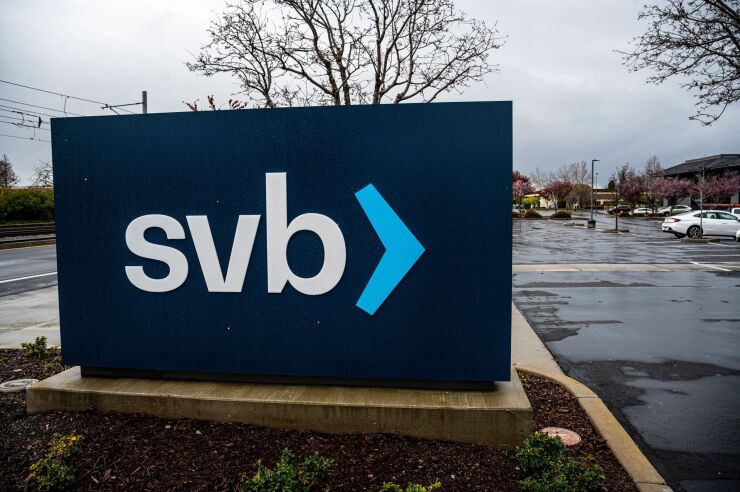
WASHINGTON— The California Department of Financial Protection and Innovation acknowledged Monday that it could have acted quicker to follow through on its concerns about Silicon Valley Bank, but it seemed to lay ample blame for the bank's failure on the Federal Reserve, also.
The department issued a review of its supervision of the bank nearly two months after the Bay Area firm collapsed. The report highlighted the need to address regulatory staffing issues, tackle modern-day banking risks like social media and assess the risks of uninsured deposits.
"Even with the benefit of hindsight, it is difficult to identify any one action or set of actions that regulators could have taken that would have been guaranteed to prevent SVB's collapse," the department noted in the report. "As the Federal Reserve noted in its SVB report in evaluating the bank's failure, [it is a challenge to determine] 'how much weight to put on the decisions of [SVB Financial Group's] board and management, the design of the Federal Reserve's supervision and regulation, the execution of that supervision and regulation, and the specific combination of environmental factors that materialized in 2022 and early 2023.'"
The department says it and the Fed found, and took supervisory actions regarding, deficiencies in the bank's risk management and liquidity but failed to ensure the bank took swift corrective action.
"Although SVB had initiated remediation efforts, [we] did not take adequate measures to ensure SVB did so with enough speed," the report says.
The department says it will coordinate with federal regulators to develop procedures and additional levels of supervisory review that could highlight problems identified in exams and promote a rapid response when necessary.
Keith P. Bishop, a lawyer and former California state financial regulator, thinks the report gently places blame on the Fed, and that there is some cause for this considering the Fed's greater resources and that it oversaw the bank's liquidity controls — which were ultimately its undoing.
The department "pointed out that the Fed had a lot more people, had a lot more involvement and most crucially had responsibility for the [bank's] liquidity." Bishop said.
The department says SVB's rapid growth outpaced its ability to scale up its supervisory staff and was not sufficiently accounted for in risk assessments. It plans to respond by revising internal processes to more quickly address supervisor staffing deficiencies and escalate concerns, particularly for larger banks. The department signaled that it may need to beef up staff and supervision to varying degrees for all banks with over $10 billion in assets.
"[We] will review [our] internal staffing processes to ensure that additional staff is assigned in a timely manner for banks with assets of more than $50 billion, commensurate with accelerated growth or increased risk profile for an institution," the report noted. "[We] will continue to develop large bank supervisory plans in coordination with federal regulators for all banks with assets of more than $10 billion, increasing focus on timelines for corrective action."
The department also said the run on Silicon Valley Bank was partly caused by the accelerative effects of social media. They said regulators need to study the role of both social media and digital banking technology in elevating the volume and speed deposit outflows banks may face. The agency said that in the future it will require banks to consider how to quantify and best manage existing and emerging risks posed by technology-enabled activities like social media and real-time deposit withdrawals.
While not new, social media's potential to accelerate market runs has only sped up with the ever-increasing interconnectivity of the financial system, Bishop said.
"There's a law in California — that was actually found to be unconstitutional, but it's still on the books — that says it's basically illegal to spread rumors about banks," he said, "but whether the rumors are true or not, what's clear is they can spread very, very quickly over the internet," he said.
But the bank was susceptible even before social media ultimately accelerated the speed of a deposit run. The underlying weaknesses which increased the bank's susceptibility to failure, California officials say, were aspects of its balance sheet, like the bank's high concentration of uninsured deposits in a single industry.
"For banks with assets over $50 billion, [we] will review the circumstances in which these banks must provide a written assessment evaluating their management of uninsured deposits, including their historic and projected levels, whether these deposits are concentrated in a specific depositor or industry group, and the bank's plan to mitigate any liquidity risk associated with such concentration."





